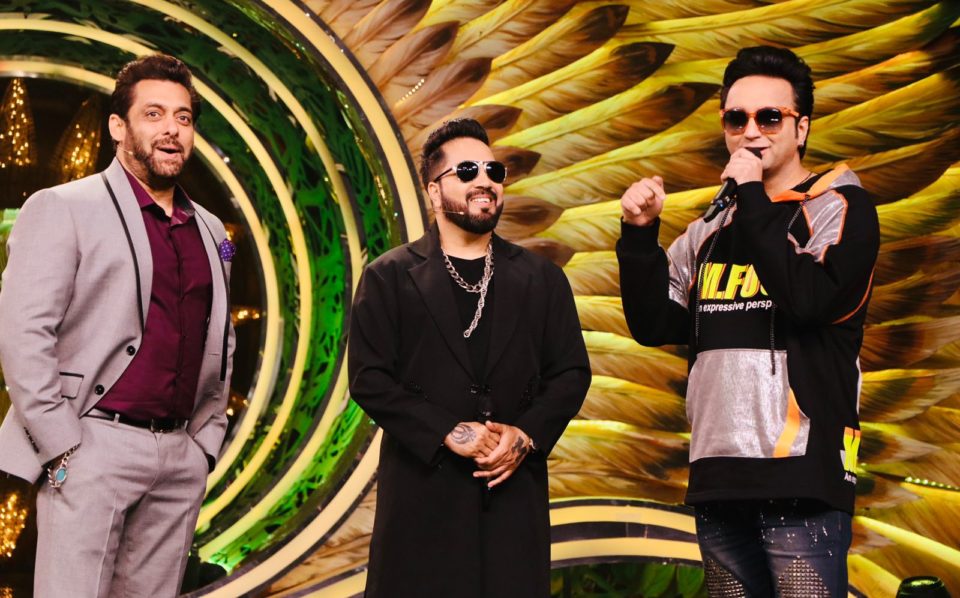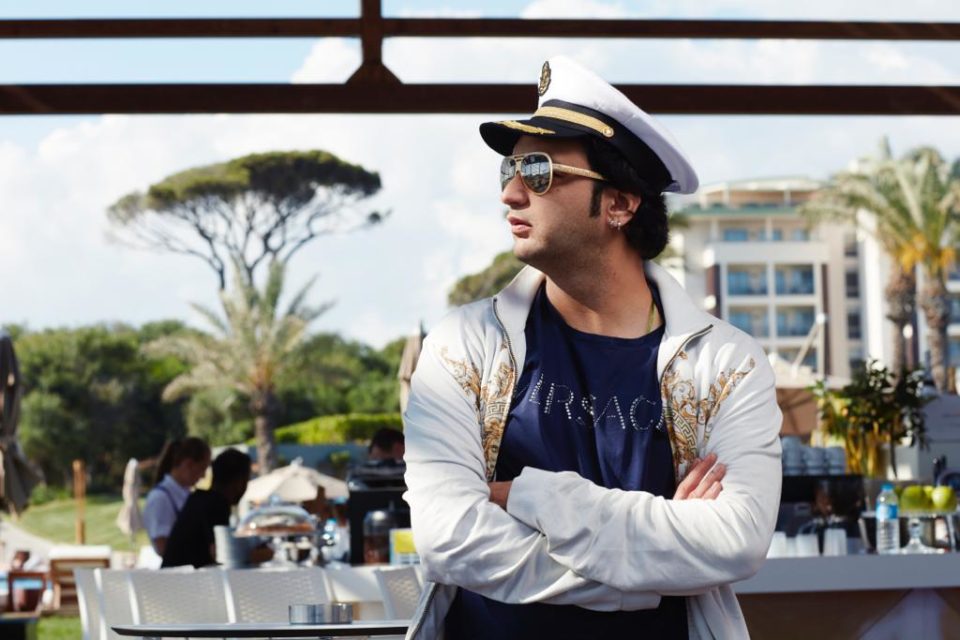Sumit Sethi on What it Takes to be a Sought-after Wedding DJ in India
The New Delhi-bred electronic producer has notched up projects with Mika Singh, The Nooran Sisters and Sona Mohapatra, and remains a mainstay at celebrity shaadis
Every performing artist at a wedding gig is often a study in how much people getting married helps the live-music ecosystem somehow survive. Beyond the much-needed paycheck, artists and DJs often come back with their fair share of stories from the road, each one topping the next.
In New Delhi-bred DJ-producer Sumit Sethi’s case, it just boils down to the simple fact that he’s in charge of the music and mood at a wedding, but he also has to take requests all the time. He says, “Once, I was stuck at a party where one gentleman wanted ‘Kajra Re’ and the other ‘Billo Rani.’ There was a very tall, lanky gentleman standing over my head and a strong-built gent on the other side demanding that this be done, each according to their own taste… all I was doing was praying to god to handle the situation.”
Claiming to have clocked in over 1,000 shows ever since he started as a DJ at the age of 16, Sethi has been getting the party started at places like the Commonwealth Games to International Indian Film Academy Awards (IIFA), plus the weddings of cricketer Yuvraj Singh with Hazel Keech in 2016 and actor-model Dia Mirza with Sahil Sangha in 2014. “I don’t look at myself as just a wedding DJ. Some people call me a celebrity DJ or a wedding specialist, but I look at myself as a performer who aims to rock a room or an arena, concerts or clubs or festivals,” he says.
When he’s not behind the decks for a glitzy, high-profile gathering or a private event, Sethi is making his moves as a producer. In February this year, he helmed a remix of Punjabi artist Mika Singh’s “Majnu 2” and it took him to the sets of reality show Bigg Boss, sharing the stage with actor Salman Khan. In an interview with Rolling Stone India, Sethi talks about his projects outside of DJing and how he survived the slump during pandemic-induced lockdowns in the country. Excerpts:
How does it feel being in an area of work that often never runs out of demand – a wedding DJ? There can’t be much of a wedding party without a DJ.
You can’t have a party without good music… that is what I feel. It feels great but I wouldn’t say that being at that level comes without its shares of challenges and anxiety even.
Wedding guests and music mix in a way that is simple, but in the same breath, I would say it’s not. It could go very wrong very quickly, if you don’t know what you’re doing. Unlike other shows, weddings are personally very special and the onus is on me to make sure that I give them the most memorable experience, because unlike regular concerts, weddings usually are a once-in-a-lifetime experience.
I started at a time when deejaying was not even considered as a profession, but over the time, with my passion and hard work, I fortunately started being regarded as one of the top DJs of the country [for] playing to a challenging set of audiences and at high-profile weddings such as that of Yuvraj Singh paaji, Kapil Sharma paaji and many more. Even today, it feels unbelievable.
My aspiration is to create a legacy for the generations to come and make deejaying accepted as a great profession. I had a rough run of it for years on that count.

How did the pandemic period of lockdowns and re-openings treat you?
I was kinda happy about the time I got to spend at home with my family and create some amazing music. I guess it did give me a lot of time for creativity…
But it was also the most difficult time for musicians and the artist community. Stage shows are our life and major source of income… it was all finished, we never thought this could happen in this life but with god’s support I started my virtual shows. Instagram Live sessions became very popular in the country. I started performing at virtual live sessions and concerts, which was a new world to me. In fact, my weekend live shows became a big point of nostalgia, drawing people who’ve loved me from my club residency days, who attended religiously week after week. They made plans with their friends and groups, and had menus set to enjoy a Friday/Saturday night. I saw a great sense of community online in these very tough times.
I also started controlling my expenses, practiced sleep-music-eat-repeat, and molded myself to the situation.
A lot of DJs witness some next-level things when they’re running the party. What’s a favorite story you like to narrate?
I experienced a groom entering a wedding like I’d never seen before, climbing from a truss with harness and dancers and what not… It’s always an experience and I love my work, so every day is a new story – believe me when I say that.
I wear these shiny hats when I perform and sometimes people want to take them off my head and wear them – it’s so tough to tell them not to… it’s crazy, they don’t understand at all!
And then of course we have many stories of performing in the middle of ‘nowhere’ – highways and remote locations for an important private function, where the threat has been more real than any of the stuff I’ve mentioned above. You have to remain polite and courteous throughout, but that may not be the sentiment you get from the other side on some occasions. You have to keep calm and from the few close calls I’ve had, even get bouncers! That’s all I’ll say on the matter.
In terms of DJ mixes for weddings and your own club/festival gigs, what do you end up doing differently?
My set is different for each occasion, I’d like to think that I am a versatile DJ who brings variety to each set, but in my own style. I love traveling. About 10 to 12 years ago, I introduced this concept of jamming live with DJs and created this concept of a DJ-based band, and it became super popular. Graduating from there, I started jamming live with 50 drummers from Nasik and Kerala. It’s next level. The point is to entertain, interact and leave your audience in awe!
What do you feel about where remix and remake culture is at right now?
Remix or remake, call them whatever you want, but you can’t overrule them… like if you listen to a DJ playing “Aankh Marey” or “Bin Tere Sanam” at a party, you need a vibing beat to the song to mix, so remixes can never go out of style. Take it or leave it.
If done well, remixes adapt the song for different environments like parties and weddings. A mid-tempo song may not exactly be dance-friendly in the true sense, but with a little tweaking, people get to enjoy their favorite tracks across tempos and styles and even dance to it. In a way it increases the shelf value and applicability of typical non-dance tracks.
Over and above being known for your remixes, what can you tell me about your original productions so far?
I did the background score for [2019 film] The Accidental Prime Minister, plus “Jai Deva” with Nooran Sisters, “Gadi Hai Mashook Jatt Di” for the Hollywood movie Transporter 4 [2015] and more.
I did “Nehar Vale Pul” with [singer-composer] Sona Mohapatra and “Veera” featuring [pop artist] Jasmine Sandlas for my concept called Punjab Project. This is where we use Punjabi folk tunes mixed with contemporary music. This one’s very close to my heart.
What was the most recent original track you got to put out and what’s coming up through 2022 on the original music front? What kind of styles are you dabbling in?
I am working on a track called “Gutt Nagini” and “Jatt Sina Tal Bolda” with [singer-producer] Jasbir Jassi paaji. I’m working very hard on the next installment of Punjab Project and will have some great blessings in the form of legendary Punjabi singers in the project. It will be another dream come true for sure. Urban Punjabi and techno are the flavors of the year, which is intact on ‘Majnu 2.’





